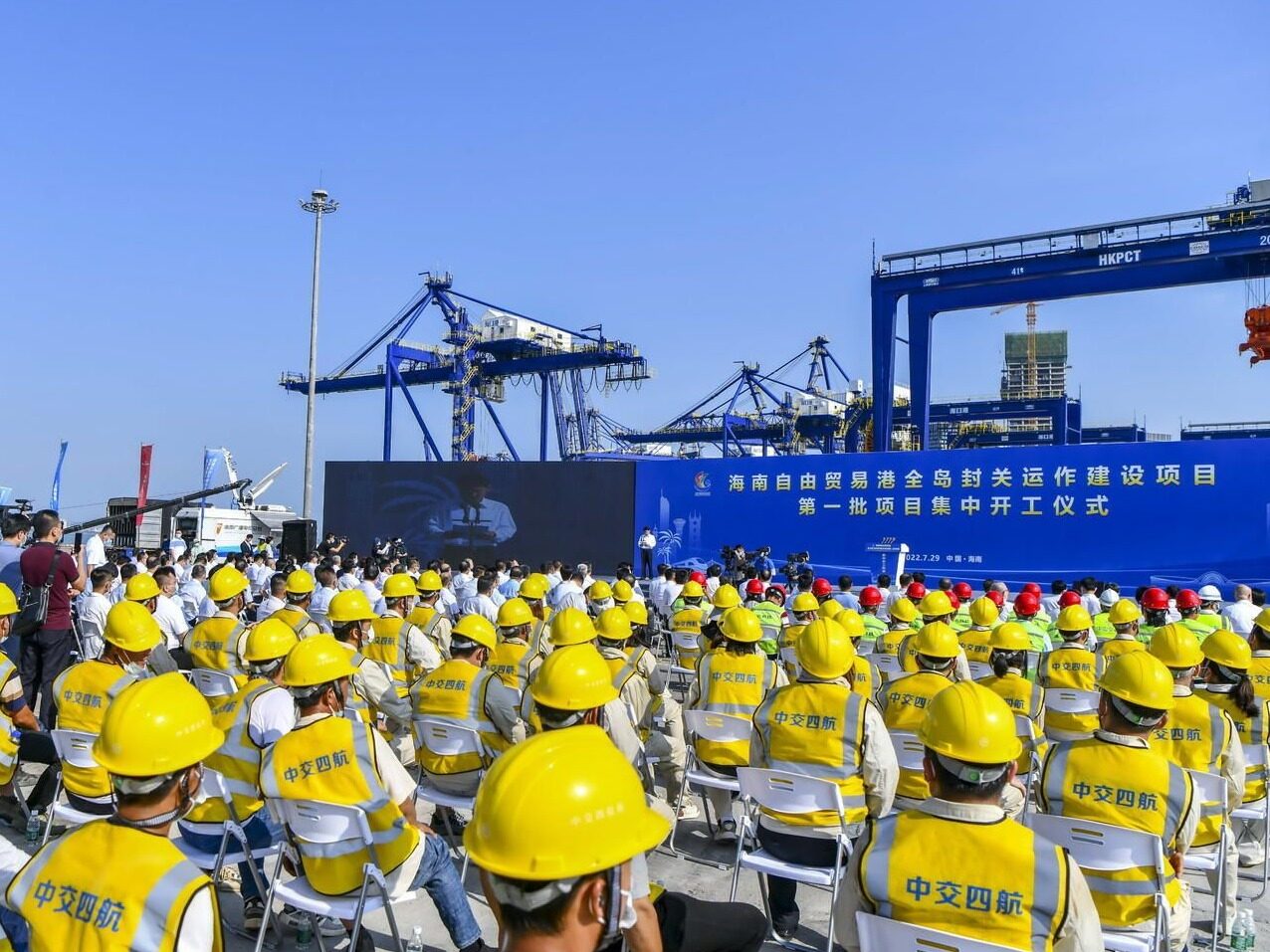- In the future, China will actively move towards becoming a nuclear power powerhouse

After decades of unremitting development of nuclear energy, China has come from behind and has now become a major nuclear power country. Recently, the China Nuclear Energy Industry Association released the "China Nuclear Energy Development Report 2021" (hereinafter referred to as the "Report"). According to the "Report", as of the end of December 2020, China has 17 nuclear power generating units under construction, with a total installed capacity of 18.53 million kilowatts. The capacity of assembled machines under construction has remained the world's largest for many years.
China's nuclear motor assembly capacity under construction ranks first in the world
The "Report" pointed out that 2020 is the final year of the "13th Five-Year Plan". During the "Thirteenth Five-Year Plan" period, China's nuclear power units have maintained safe and stable operation. 20 new commercial nuclear power units have been put into operation, with an additional installed capacity of 23.447 million kilowatts. The total number of commercial nuclear power units has reached 48, with a total installed capacity of 49.88 million kilowatts. The capacity ranks third in the world, and the power generation capacity in 2020 will reach the second in the world; 11 new nuclear power units have been started with an installed capacity of 12.604 million kilowatts, and the number of units under construction and installed capacity has ranked first in the world for many years.
In 2020, China's nuclear power independent innovation capability will be significantly enhanced. The research and development of Hualong-1's independent third-generation nuclear power technology has been completed, and the major special projects of large-scale advanced pressurized water reactors and high-temperature gas-cooled reactor nuclear power plants have made significant progress. The research and development of small-scale reactors, fourth-generation nuclear energy technology, and fusion reactors are basically in line with international standards. The world’s first nuclear power reactors of the three generations of AP1000 and EPR nuclear power technologies were successively built and put into production in China and completed the first fuel cycle operation. The independent nuclear power brand "Hualong No. 1" was successfully connected to the grid, and the independent third-generation nuclear power model "Guohe No. 1" was officially released. The field of nuclear power technology has ranked among the top in the world.
The guarantee system for natural uranium and nuclear fuel has been continuously improved. China has established a relatively complete and independent nuclear fuel cycle industrial chain that can support the medium and long-term development of nuclear power. The localization and autonomy of nuclear power equipment manufacturing have continuously improved, and the overall level of research, manufacturing and application has been continuously improved. The comprehensive localization rate of China's third-generation independent nuclear power has reached 88%, forming an annual supply of 8 to 10 (sets) of nuclear power main equipment Ability, construction and construction capabilities are the world's leading.
At the same time, the "Nuclear Safety Law of the People's Republic of China" was promulgated and implemented, new progress has been made in the construction of the policy and regulation system, the international cooperation in nuclear energy has continued to deepen, the construction of the talent team has been continuously strengthened, and the development environment of nuclear power has been continuously improved.
China's nuclear power generation will reduce carbon dioxide emissions by more than 274 million tons by 2020
The "Report" shows that in 2020, China's nuclear power generation will be 366.243 billion kilowatt-hours, an increase of 5.02% year-on-year, accounting for 4.94% of the country's cumulative power generation. Compared with coal-fired power generation, the annual nuclear power generation is equivalent to reducing the burning of 104,741,900 tons of standard coal, reducing the emissions of 274,423,800 tons of carbon dioxide, 890,300 tons of sulfur dioxide, and 775,100 tons of nitrogen oxides, which is equivalent to afforestation of 771,400 hectares. Over the past ten years, nuclear power generation has continued to grow, making important contributions to ensuring the safety of power supply and energy conservation and emission reduction.
In terms of safe production of nuclear power, China’s operating nuclear power plants strictly control the operational risks of the units, and the integrity of the three safety barriers for operating nuclear power units have been guaranteed. There have been no international nuclear incident classification (INES) level 2 and above operational incidents. Both the personal and collective doses of nuclear power plant personnel remained low, and there were no incidents affecting the environment and public health.
In contrast to the performance indicators specified by the World Association of Nuclear Power Operators (WANO), as of the end of 2020, of the 47 nuclear power units in China with a statistical WANO composite index, 28 units have a comprehensive index of 100 points, accounting for 60 of the total number of nuclear power units in China. %, accounting for one-third of the world's full-point units.
Nuclear energy has become an important carrier for constructing a new development pattern of "double cycle"
The Fifth Plenary Session of the Nineteenth Central Committee of the Communist Party of China proposed to accelerate the construction of a new development pattern that focuses on the domestic cycle and promotes the mutual promotion of the domestic and international double cycles. Nuclear energy is a high-tech strategic industry involving more than 70 professional disciplines. It has a large one-time investment and a long industrial chain. Nuclear power investment and construction have a direct and indirect stimulating effect on a considerable number of industries, which will help smooth the domestic cycle. The epidemic era is expected to become an important industry for cultivating new economic growth points.
The "Report" pointed out that nuclear power projects are an important carrier to open up the international cycle. With nuclear power projects as a link, the "hundred-year marriage" between countries will be achieved, which will further expand opening to the outside world, enhance international cooperation, promote win-win cooperation, and accelerate Build a new development pattern.
Taking the “Hualong No. 1” project in the world as an example, it has driven more than 5,300 upstream and downstream enterprises to realize the localization of 411 core equipment, and promoted the development of the country’s high-end major equipment manufacturing industry and related service industries. Chain contribution is as high as hundreds of billions. One "Hualong No. 1" unit generates nearly 10 billion kilowatt-hours of clean power a year, which can meet the annual electricity demand for production and life in cities with a population of 1 million in China; meanwhile, it is equivalent to reducing standard coal consumption by 3.12 million tons and reducing carbon dioxide emissions by 8.16 million Tons is equivalent to planting 70 million trees.
In the future planning of the "Report", China's nuclear power will take safety assurance as a prerequisite in the "14th Five-Year Plan" and medium and long-term development, and transform to a new stage of active and orderly development. Under the background of carbon peak and carbon neutrality, China's energy and power system clean and low-carbon transformation process will be further accelerated. Nuclear energy, as a clean energy with near zero emissions, will have a broader development space and is expected to maintain a relatively rapid development. The situation is that China's independent third-generation nuclear power committee will achieve large-scale batch development in accordance with the approval rhythm of 6 to 8 units per year. It is estimated that by 2025, China's nuclear power installed capacity will reach about 70 million kilowatts and about 50 million kilowatts under construction; by 2030, the installed nuclear power capacity will reach 120 million kilowatts, and nuclear power generation will account for about 8% of the country's electricity generation. Editor/Xu Shengpeng
Comment
 Praise
Praise
 Collect
Collect
 Comment
Comment
 Search
Search














Write something~